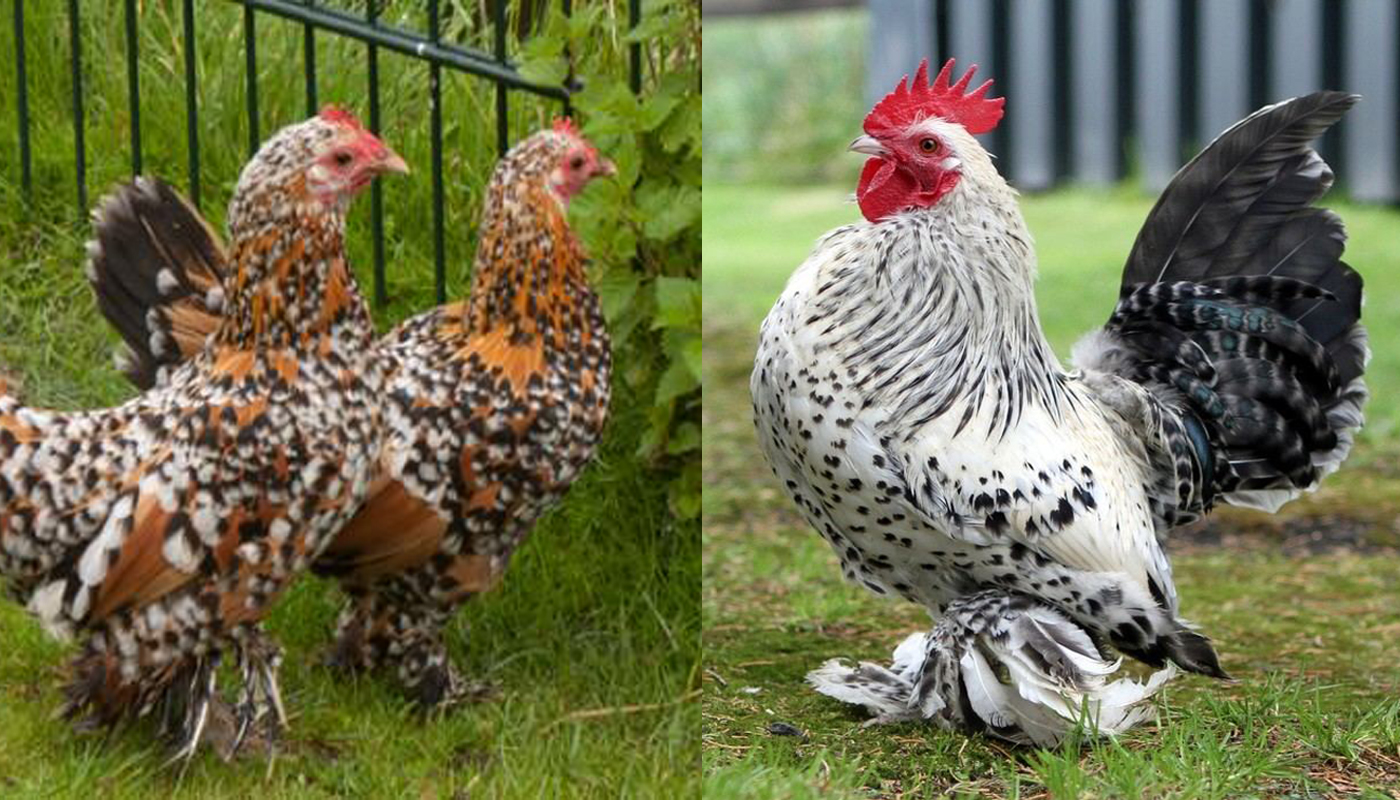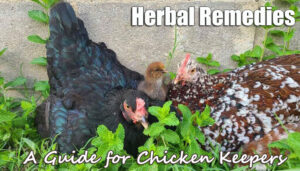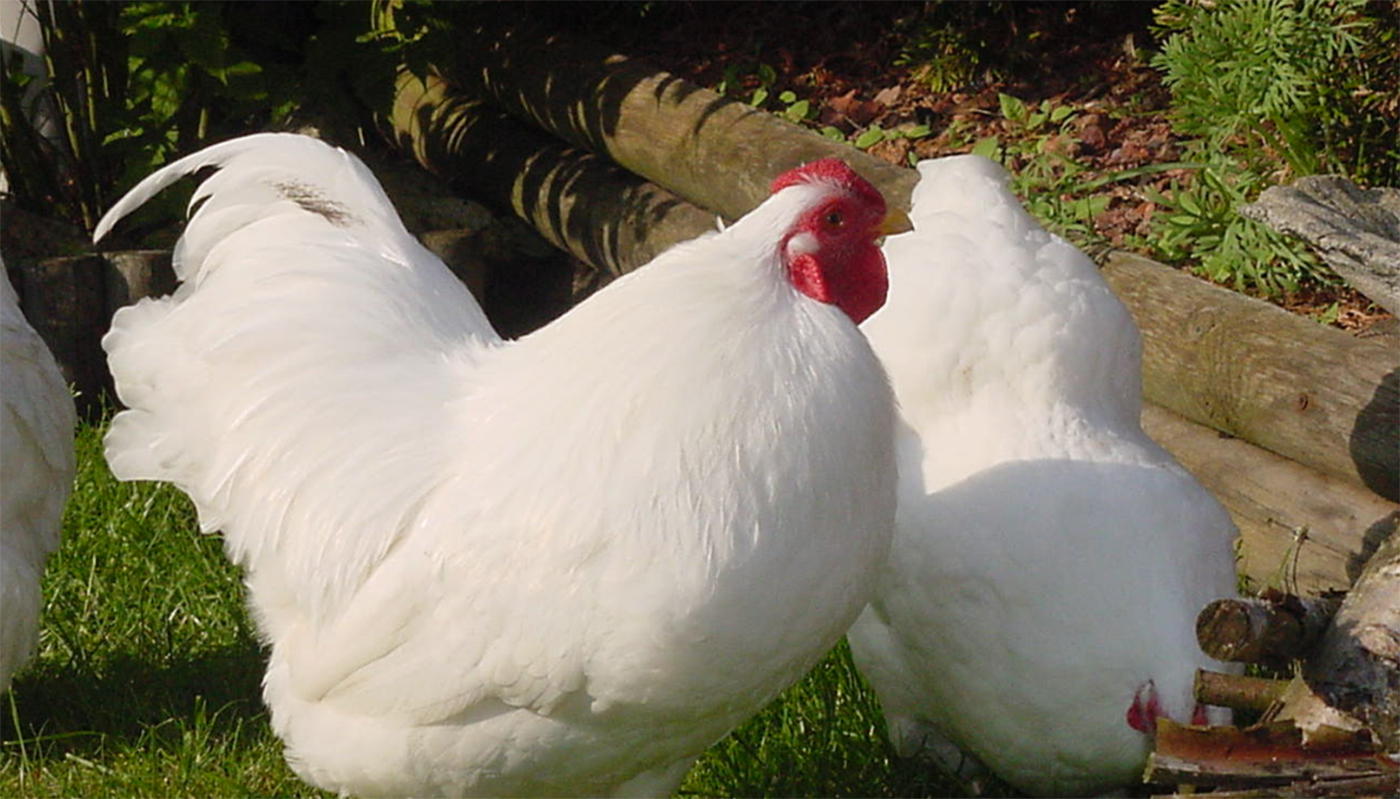
Due to their unique comb that looks like two vertical spikes that look like horns, it is known as the devil chicken.
This chicken once famous for its finest quality meat said to be of remarkable taste is now on the verge of extinction. Thanks to the hard work of various hobby farmers they are making a very slow to come back from the brink of extinction. More breeders are required to save this dual purpose unique French breed.
| Country of Origin: | America |
| American Poultry Association: | Recognized as a breed of chicken in the United States |
| Chicken Category: | Large Breed |
| Chicken Class: | Continental |
| Bantam Variety Available? | Yes – All Other Comb Clean Legged Bantam Classification |
| Related | TOP 10 BANTAM CHICKEN BREEDS FOR BEGINNERS |
| Good Starter Chicken? | Not the best breed for either a backyard flock or starter chicken as they are quite a wild flighty breed. |
| Related | 10 BEST STARTER CHICKENS FOR THE FIRST TIME POULTRY KEEPER |
PURPOSE⇒ |
Eggs: They are very good egg layers.
They lay large white eggs from 150 – 180 per year They will lay consistently throughout the year They start to lay eggs from around 16 to 22 weeks old.
Meat: They have white meat which is said to be renowned for its taste
Breeding: They can be bred but the hens are not broody, nor do they make very good mothers. Breeders may need incubators and or brood hens/foster mothers.
If you are breeding the La Fleche for show choosing the correct hens and rooster bloodline is crucial.
Foraging: They are excellent foragers enjoying their fresh free-range bounty.
Show Bird: Their unique appearance and glossy black plumage make them good show birds
Pets: They do not make good pets
Other: Their flighty alert nature makes them excellent birds to roam around the garden. They are very self-sufficient birds that can take care of themselves.
|
| Flyers? | Excellent flyers that can clear a six-foot wall |
| Noisy Birds? | Not too noisy |
| Interaction with other chickens: | They are bit flighty and tend to prefer mixing with their own kind. As with any flock if you are introducing new birds it is best to slowly socialize them with the flock. |
| Good with kids? | Not the best chickens for kids as they do not like to be handled and will shy away from humans |
| Related | 10 ROOSTER BREEDS THAT DO NOT MIND CHILDREN |
HISTORY
The La Fleche is an old French breed of chicken that was originally bred in the city of Le Mans in the 15th century before it ended up in the town of La Fleche. La Fleche is a town within the Pays de la Loire region of France.
The La Fleche was once prized at the markets in Paris and Anjou for its fine quality meat the flavor of which was unmatched by any other chicken.
The La Fleche was brought to America in the 1850’s being found by poultry producers to be “delicate in constitution”. They were soon taken over by hardier breeds that arrived in the USA and were bred with local chickens.
The La Fleche was accepted in the Standard of Perfection by the American Poultry Association in 1874.
CHARACTERISTICS |
|
|---|---|
IDENTIFICATION⇒ |
Appearance/Body: They have tight fitting pure black feathers, large red wattles and white earlobes. Their unique V-shaped comb that stands up as vertical spikes look like horns. They have clean slate grey to almost white legs and a perpendicular tail. Their compact feathering makes them look smaller than they actually are.
Color(s) Black
Comb: They have two vertical spikes making a sort of V-comb
Ave. Weight: Pullet/Hen 5 – 6 lbs.
Cockerel/Rooster 6 – 7 lbs. |
| Life Expectancy: | The average lifespan is 8 years |
| Health: | They have no known health issues and are quite a hardy bird. |
| You may Also Like: | HOW TO TELL IS A CHICKEN IS SICK |
| Temperament: | Skittish, flighty and quite wild |
| Socialize Behavior? | Not great social chickens |
| You may Also Like: | HOW TO SOCIALIZING YOUR NEW CHICKENS |
| Known predators: | Most domestic animals leave them alone as they know how to dodge predators and fend for themselves. It is always best to keep an eye on dogs and cats, however. If hawks and or foxes are in your area it is always best to take precautions. Although they are not an easy target for most feathery predators. Check with local animal shelters, zoos, vets, animal control and or pet stores about common predators in your area. |
| Conservation Status: | These birds conservation status is recorded as “critical”. It is best to check on any special license or instructions that may be set up for owning these birds. This can be checked with your local or national conservation centers. |
IDEAL ENVIRONMENT |
|
|---|---|
| Garden Size: | They will take to confinement but not happily. They are ideally suited to a small homestead or farm type environment than a backyard. |
| Ideal Climate: | They prefer the warmer climates to the older ones and will need extra care in colder weather. |
| Ideal Coop: | The rule of thumb for any coop is 50 cm x 50 cm per hen/rooster in the coop. Ensure there is a good space for the nesting boxes and nightly roosting rails at least 1.5 inches wide. Good ventilation for air but not too drafty especially in winter. It is always a good idea to raise the coop off the ground to give the birds a dry place to roost and lay especially in wet weather. |
| Ideal Coop Run: | Very good flyers that will fly so it is necessary to fully cover the coop run |
| Ideal Flock Size: | They are quite happy in any size flock as long as they have one companion to wander the gardens with. |
| Special Instructions: | In a smaller neighborhood it may be a good idea to get their wings clipped regularly |
| Accessories: | The following accessories are ideal for your coop: Nesting boxes Straw for the boxes and roosting area Roosting rails Perches Water troughs/bowls Food bowls/feeders Heating lamp(s) Animal carrier for transport purposes |
| You may Also Like: | 45 FREE DIY CHICKEN COOP PLANS, TUTORIALS AND DESIGNS |
WHERE TO FIND THESE BIRDS TO ADD TO YOUR FLOCK
They are extremely rare and will not be found at live poultry outlets and farms. It is best to check with your local conservation centers and the American Poultry Association for registered breeders. These associations will also have a host of valuable information. They will also be able to help with any special requirements, attention or care they may need. If you plan on breeding your chickens, you will want to make sure that they are from a good bloodline.
CARING FOR THE BIRD(S)
Please click here for our full guide to “Taking care of chickens”. This is a comprehensive guide to owning chickens. It covers where to start from choosing your ideal flock, the coop that would best suit your garden, your bird and you to buying and bringing your bird(s) home.
GENERAL
The La Fleche are critically endangered and are in need of breeders to help bring their number up. The American Poultry Association and the American Livestock Conservancy may be able to help you start breeding these amazing chickens. There are Poultry Heritage websites that may also be helpful in getting in touch with breeders of the La Fleche in America.
GROOMING
These chickens do love their dust bath and will love some added herbal essences mixed into the loose sand to help with pests and excess feather oils. You may need some extra help in handling the La Fleche chickens in order to examine them for mites, lice and various other parasites. Checking for these pests in their feathers should be done at least once a week to your chickens healthy. An extra pair of hands will help in order to not harm the chickens or you whilst examining them for pests. Always get your birds de-wormed on a regular basis especially if they are around other animals or interacting with kids.
If you do not want to have to search for them in trees or over the neighbors fence it is a good idea to have their wings clipped. This will have to be done on a regular basis as they do grow back after each moult. It is advisable to seek professional help on the best way to clip their wings if you have never done it before or let someone with experience clip them.
DIET AND NUTRITION
Give your La Fleche a balanced diet of chicken pellets, grains, chicken mash or grain mix from 8 weeks old and older. This should be fed to them first thing in the morning before they are let out to roam about to ensure they are getting all their nutrients. As they are great foragers they will mostly eat what their fresh catch they have found while free-ranging during the day. As such you may find that they do not eat as much as most other chickens do.
For baby chickens, the best is always Chick Starter when they are under 8 weeks old.
Laying hens should get extra protein and calcium in their diets to ensure the quality of their eggs and to keep them in tip-top health.
La Fleche may be a bit wild, but they love getting table scraps treats in the form of vegetables and fruit as much as any other chicken breed. They find these scraps even better if they are served as ice-cubes on very hot days.
Feeding your chickens correctly will give your organic garden a lot of nutritious fertilizer to make your vegetables or flowers grow.
See our comprehensive guide to “Feeding your chickens” for more information of the different types of chicken feed for chicks, hens, laying hens, roosters, etc. and where to buy the feed and approximate cost of the feed.
SOCIALIZING THE BIRD(S)
The La Fleche is quite a stand-offish flighty breed of chicken that tends to avoid newcomers to their flock.
They should warm up to them or rather get used to them as they become more familiar over time.
Always check on how well a breed will get on with your current flock before buying them as you do not want to upset your coop or stress your current flock.
If you want to introduce another breed with your La Fleche, try a breed that does not have an aggressive nature.
As with any newcomer to the roost, you will have to quarantine the bird for 7 – 31 days to ensure it does not have any unwanted critters or disease that could spread to your current flock.
They may seem independent loners, but they do have a pecking order, so it is advisable to socialize newcomers slowly and determine when it is right to allow them to become a permanent part of the flock.
NOTES / SPECIAL INSTRUCTIONS
As they are registered as a “critical” conservation status they may need an extra license to own or keep in your garden. For advice on what the bird’s conservation status and orders are please check with your local conservation department.
For breeders, it is imperative that you always check your bird’s bloodlines and ensure you are buying your birds from a reputed breeder/farm. In order to sell birds of such stature, they have to be recorded and documented, always check with local animal breeding organizations for these records.
These legitimate documents are also required should you wish to show your bird(s) in various poultry shows/competition showings.
For information and advice on adopting rescued animals, you can visit or contact your local animal welfare center.
Video
USEFUL LINKS
- Caring for your Chicken
- Feeding
- Health
- Socializing your Chicken
- Breeding Chicken
- Raising Chickens A-Z
- Hatching Eggs
- What is Molting
- Animal Shelter (ASPCA)
- American Veterinary Medical Association
- American Poultry Association
- American Animal Welfare Society
- American Animal Control
- American Animal Husbandry Society
References
- https://en.wikipedia.org
- https://livestockconservancy.org
- https://www.roysfarm.com
- https://www.mypetchicken.com
- https://www.backyardchickens.com
- https://www.feathersite.com/
 Rosecomb Chicken Breed – Everything You Need to Know
Rosecomb Chicken Breed – Everything You Need to Know Booted Bantam Chicken Breed – Everything You Need to Know
Booted Bantam Chicken Breed – Everything You Need to Know CONDITIONS THAT AFFECT THE EYES OF A CHICKEN
CONDITIONS THAT AFFECT THE EYES OF A CHICKEN Hamburg Chicken Breed – Everything You Need to Know
Hamburg Chicken Breed – Everything You Need to Know Herbal Remedies for Common Poultry Ailments: A Guide for Chicken Keepers
Herbal Remedies for Common Poultry Ailments: A Guide for Chicken Keepers Chantecler Chicken Breed – Everything You Need to Know
Chantecler Chicken Breed – Everything You Need to Know Plymouth Rock Chicken Breed – Everything You Need to Know
Plymouth Rock Chicken Breed – Everything You Need to Know 10 of the Most Rare Chicken Breeds
10 of the Most Rare Chicken Breeds White-faced Black Spanish Chicken Breed – Everything You Need to Know
White-faced Black Spanish Chicken Breed – Everything You Need to Know All about Pullets, Hens and Eggs
All about Pullets, Hens and Eggs Buckeye Chicken Breed – Everything You Need to Know
Buckeye Chicken Breed – Everything You Need to Know 10 Best Tractor Coop and Runs to Buy
10 Best Tractor Coop and Runs to Buy